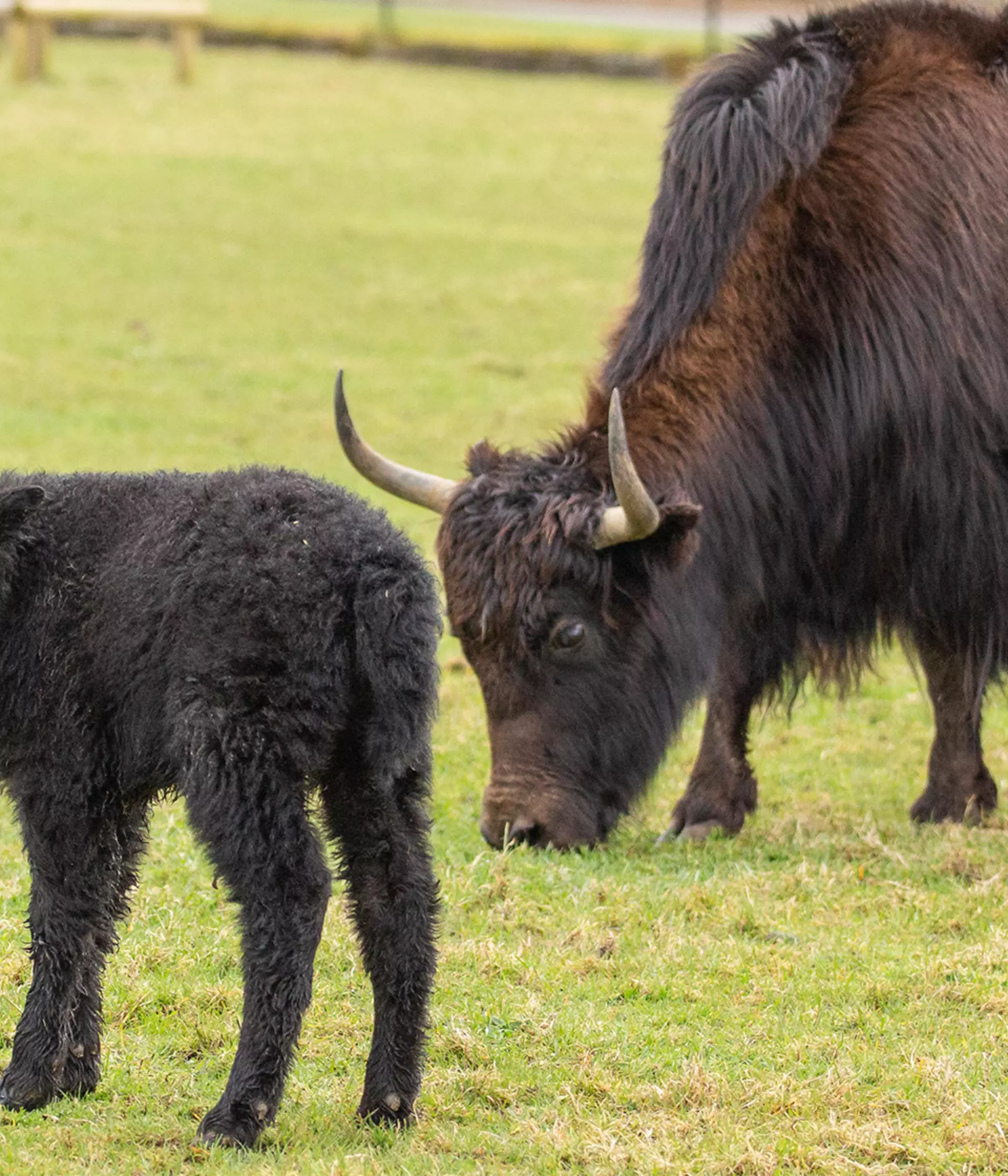Area of zoo
Asia
Enclosure status
Open
Population in the wild
7,500-9,999
IUCN status
Vulnerable
Scientific name
Bos grunniens
Order
Artiodactyla
Type
Mammals
Family
Bovidae
Region
China and India
Habitat
Grasslands on mountains and plateaus
Yak facts
- Yaks can survive winter storms as cold as -40°C.
- Yaks live between 4000m and 6100m, that's as high as 16 Empire state buildings stacked.
- Climate change is making yak farming much tougher, as warmer temperatures are causing more disease and inedible plants are now growing in their range, which is putting farmers livelihoods at risk.
- Yaks can use their horns to dig through snow to uncover plants.
- Like cows, yaks have two stomachs to help digest nutrients from their food.
- Yaks were first domesticated 10,000 years ago by Qiang herdsmen domesticated yaks some 10,000 years ago
Our Yaks
Our yak herd are each named after characters in Harry Potter. We have Luna, Hermione, Pandora, Ginny, Petunia, Draco and calves Cedric and Tonks.
Baby Yaks at the Zoo
Born to Mum Hermione at the UK’s largest Zoo on Thursday 26 March, the yak (bos mutus grunniens) calf will be named after its first health check, when vets will be able to determine its sex.
Yak threats
The remaining wild yaks are at risk of extinction due to poaching, interbreeding with domestic yaks and habitat loss caused by farming and climate change.
